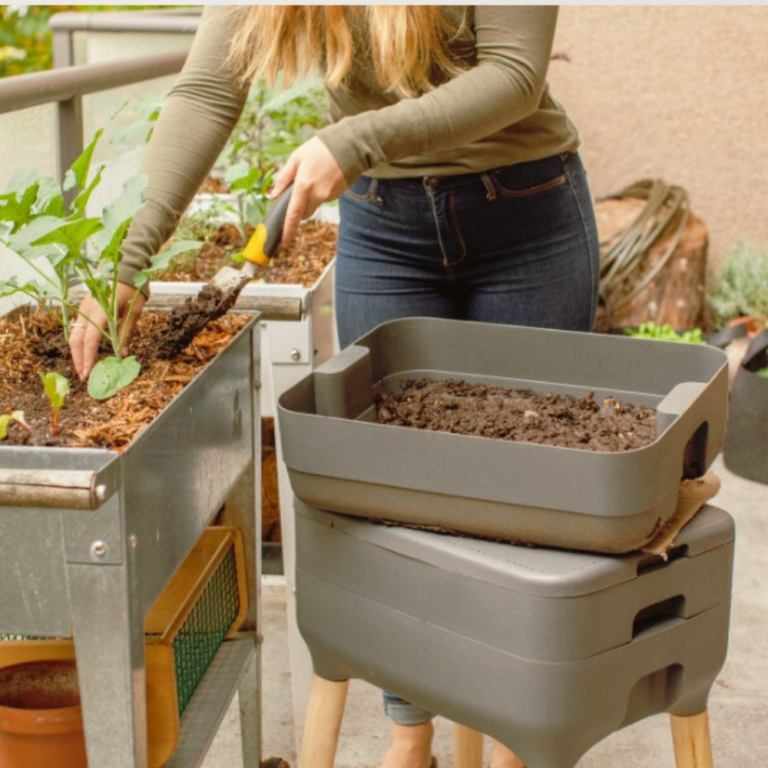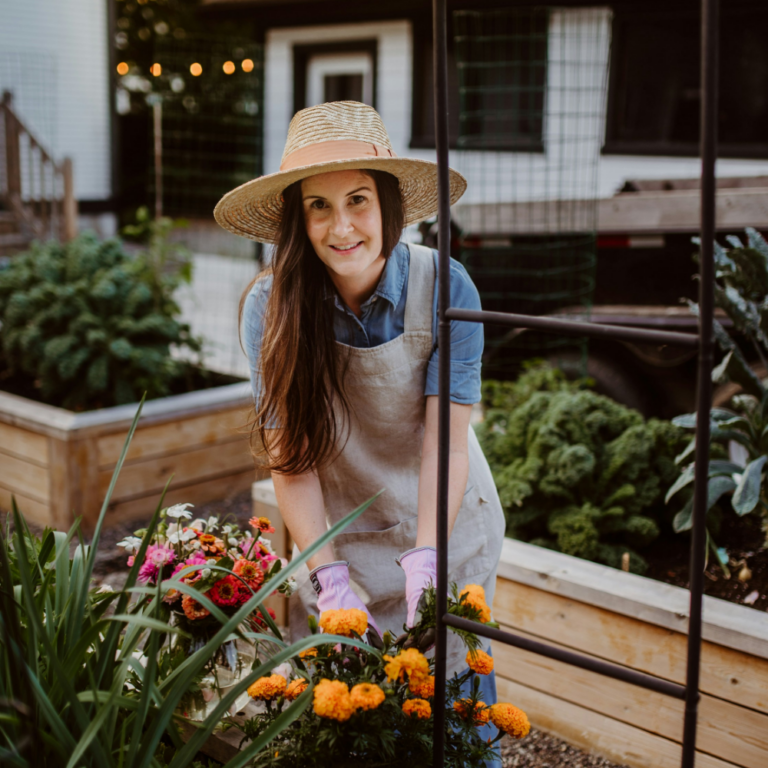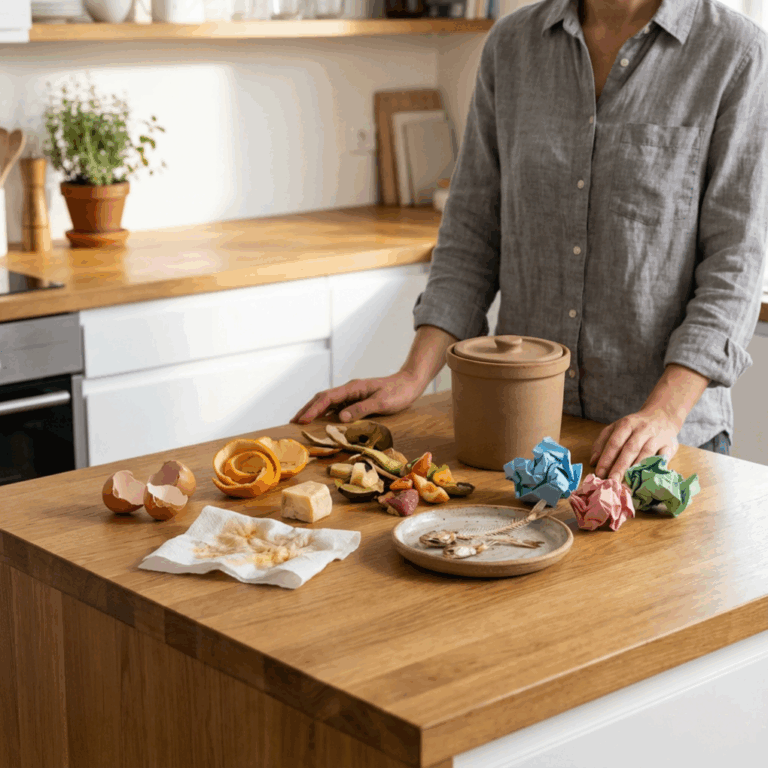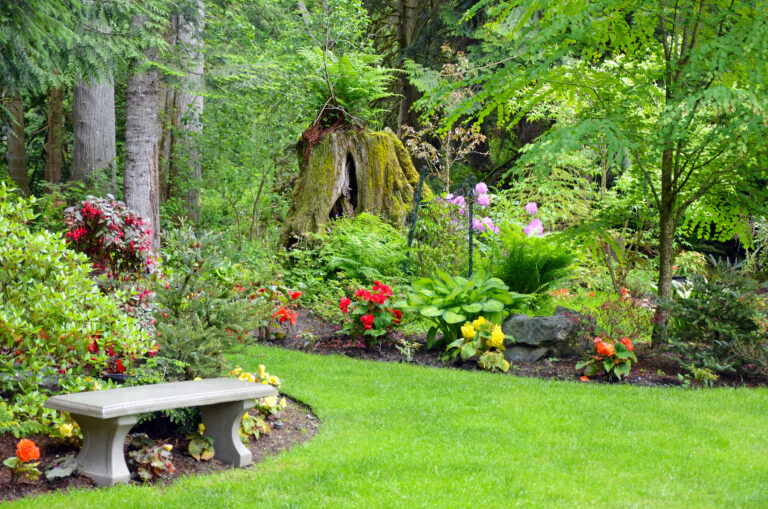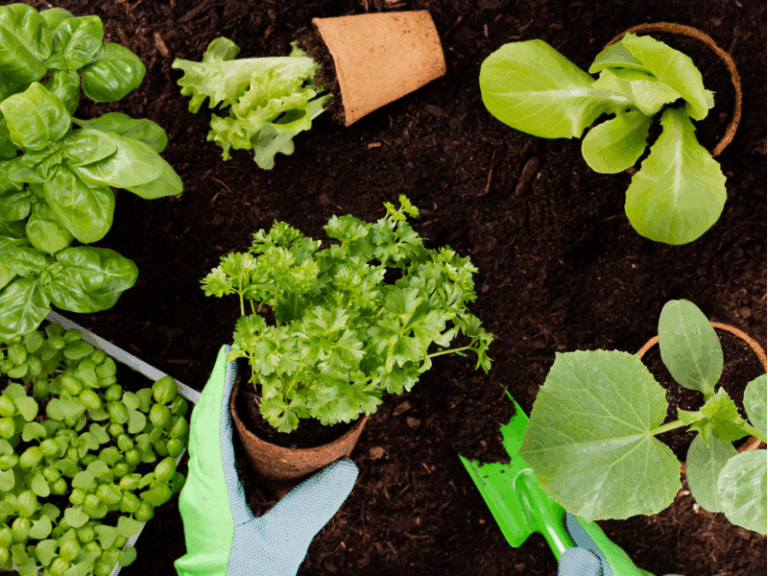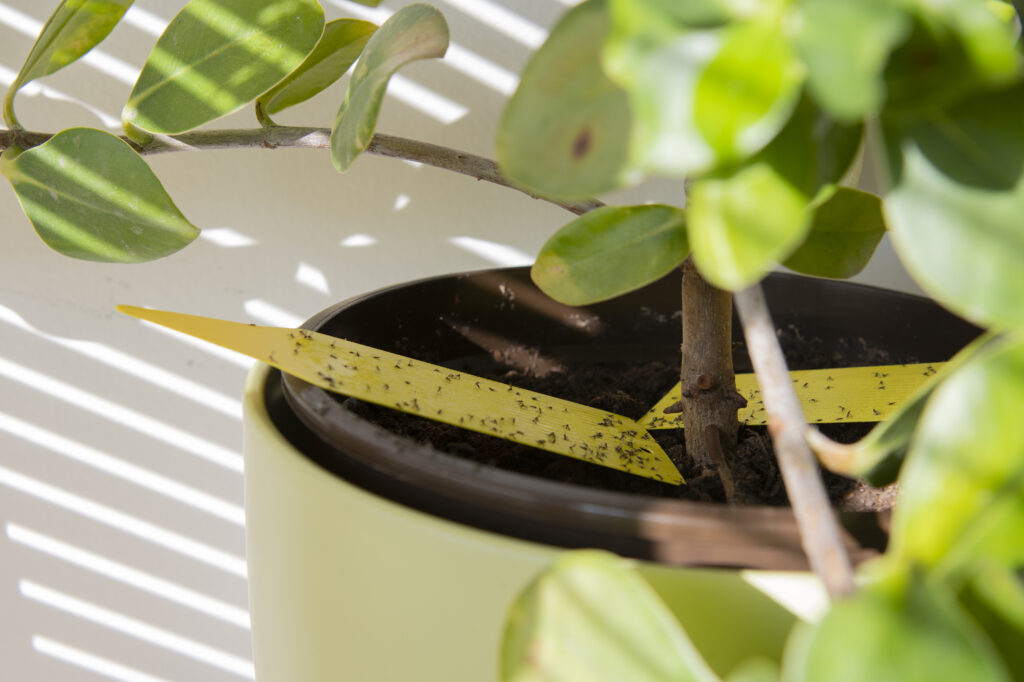
Key Takeaways
- Small black bugs on plants are often aphids, fungus gnats, or spider mites—not always harmful but can weaken growth if ignored.
- Natural treatments like neem oil, insecticidal soap, and diatomaceous earth safely control infestations without chemicals.
- Regular inspection, balanced watering, and good airflow are the best long-term defenses against plant pests.
You’re checking on your plants when you spot it: tiny black dots crawling on the leaves or buzzing up from the soil. Yikes! Suddenly, your tomato plant doesn’t look so healthy. But don’t worry, almost every plant lover runs into these little pests at some point.
Most of the time, those small black bugs are common culprits such as fungus gnats, aphids, spider mites, or flea beetles. The best part? You don’t need to spray toxic chemicals to get rid of them. There are safe, natural ways to clear them out and keep your plants thriving.
In this guide, you’ll learn how to identify, prevent, and treat small black bugs on plants—so your garden stays healthy and eco-friendly.
Quick Identification Guide: Spotting Small Black Bugs on Plants
Not sure which tiny black bugs are invading your plants? Start here. Use this quick guide to match what you’re seeing, whether it’s specks on the soil, clusters on stems, or webbing on leaves, to the most common plant pests.
Look for key signs like sticky honeydew, chewed holes, or delicate webs to help pinpoint the culprit fast. This overview will help you identify the problem so you can choose the right solution and get your plants back to health.
| Bug Type | Where Found | Key Signs of Damage | Natural Treatment |
|---|---|---|---|
| Black Aphids | Clusters on stems and new leaves | Curled or yellow leaves, sticky residue (honeydew), ants nearby | Spray with neem oil or insecticidal soap; rinse with water |
| Fungus Gnats | Hovering near damp soil | Tiny flies around pots, wilting seedlings | Let soil dry, use sticky traps, apply neem oil drench |
| Spider Mites | Undersides of leaves | Fine webbing, pale speckles, dry patches | Increase humidity, spray with soap or neem oil |
| Flea Beetles | Outdoor crops and seedlings | “Shot hole” pattern on leaves | Dust soil with diatomaceous earth, use garlic spray |
| Minute Pirate Bugs | Leaves and flowers of infested plants | No damage; feed on aphids, thrips, and mites | No treatment needed; plant nectar flowers to attract them |
| Thrips | Flower petals and leaf surfaces | Silvery streaks or scarring on leaves and flowers | Sticky traps, neem oil spray, attract lacewings |
| Scale Insects | Stems and leaf joints | Hard bumps, sticky honeydew, black mold | Wipe with alcohol or apply neem oil |
| Springtails | Damp soil and drainage holes | Tiny hopping dots, usually harmless to plants | Let soil dry, improve drainage, use diatomaceous earth |
Not all small black bugs are harmful — some, like minute pirate bugs, are actually beneficial to your plants. You’ll find full details, photos, and treatment tips for each insect in the next section below.
Detailed Profiles of Common Small Black Bugs
Now that you’ve seen a quick overview of the most common tiny black bugs, let’s take a closer look at each one. In the sections below, you’ll find detailed descriptions, signs of infestation, and safe, natural treatment options for every type — from sap-sucking aphids to harmless springtails and helpful minute pirate bugs.
Understanding how each behaves will help you choose the right approach and protect your plants more effectively.
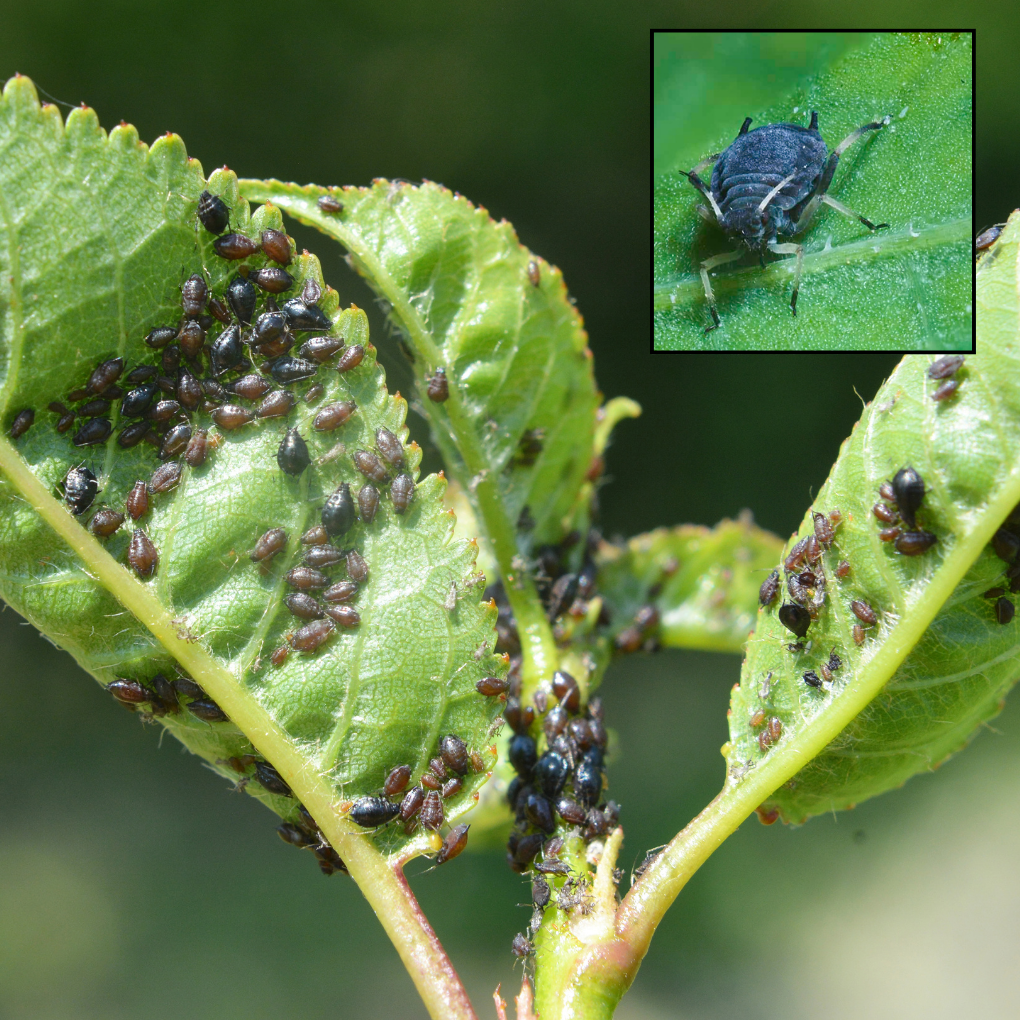
1. Black Aphids
Aphids are tiny, soft-bodied insects that can be green, yellow, or black. Black bean aphids (Aphis fabae) often show up on beans and beets, while black citrus aphids (Toxoptera aurantii) target citrus and other fruit trees. They cluster on young stems and leaves, sucking sap from tender growth.
Signs of Infestation
- Curled, yellow, or wilted leaves.
- Sticky honeydew coating leaves and stems.
- Black sooty mold growing on the honeydew.
- Ants are climbing the plant, feeding on the honeydew.
🧴 Natural Treatment
Start by spraying your plants with insecticidal soap to quickly knock down populations. For a homemade insecticide, mix a garlic and chili spray, which repels aphids and is safe for most plants. You can also rinse aphids off with a strong stream of water, which works well for mild infestations.
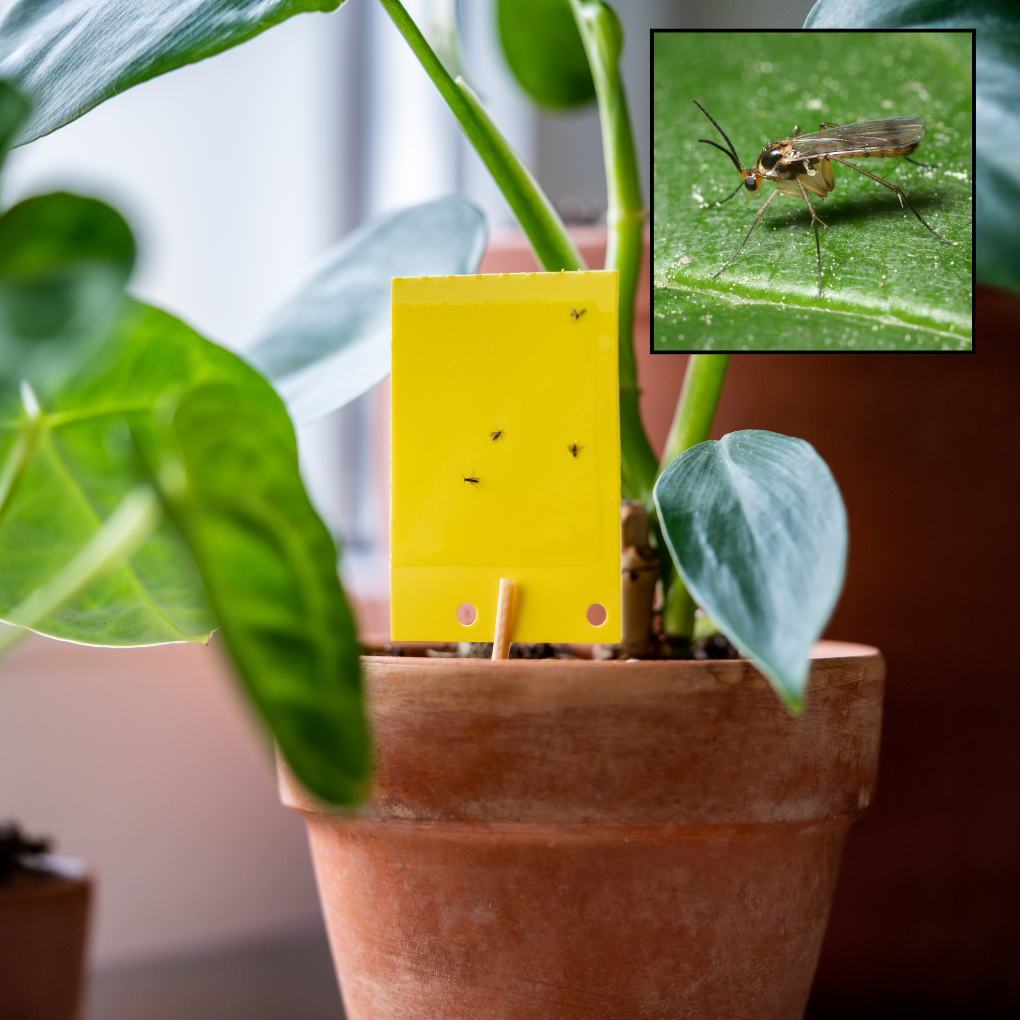
2. Fungus Gnats
Fungus gnats are tiny black flies, about 1/8 inch long, often mistaken for fruit flies. They thrive in damp soil. While adults are mostly a nuisance, their larvae live in the top layer of soil and chew on plant roots, weakening seedlings and young plants.
Signs of Infestation
- Small black flies hover near soil or leaves.
- Larvae are visible in the potting mix in damp conditions.
- Seedlings wilting or stunted growth.
- Infestations are worse in constantly wet soil.
🟨 Natural Treatment
The first step to controlling fungus gnats is to let the soil dry out between waterings, since they thrive in damp conditions. Place yellow sticky traps near the soil surface to catch adult gnats before they lay more eggs. For a homemade insecticide, use a diluted neem oil drench.
Mix neem oil with water and pour it into the soil to kill larvae living near the roots. Another natural option is sprinkling a thin layer of sand or diatomaceous earth on top of the soil, which makes it harder for adults to lay eggs and for larvae to survive.
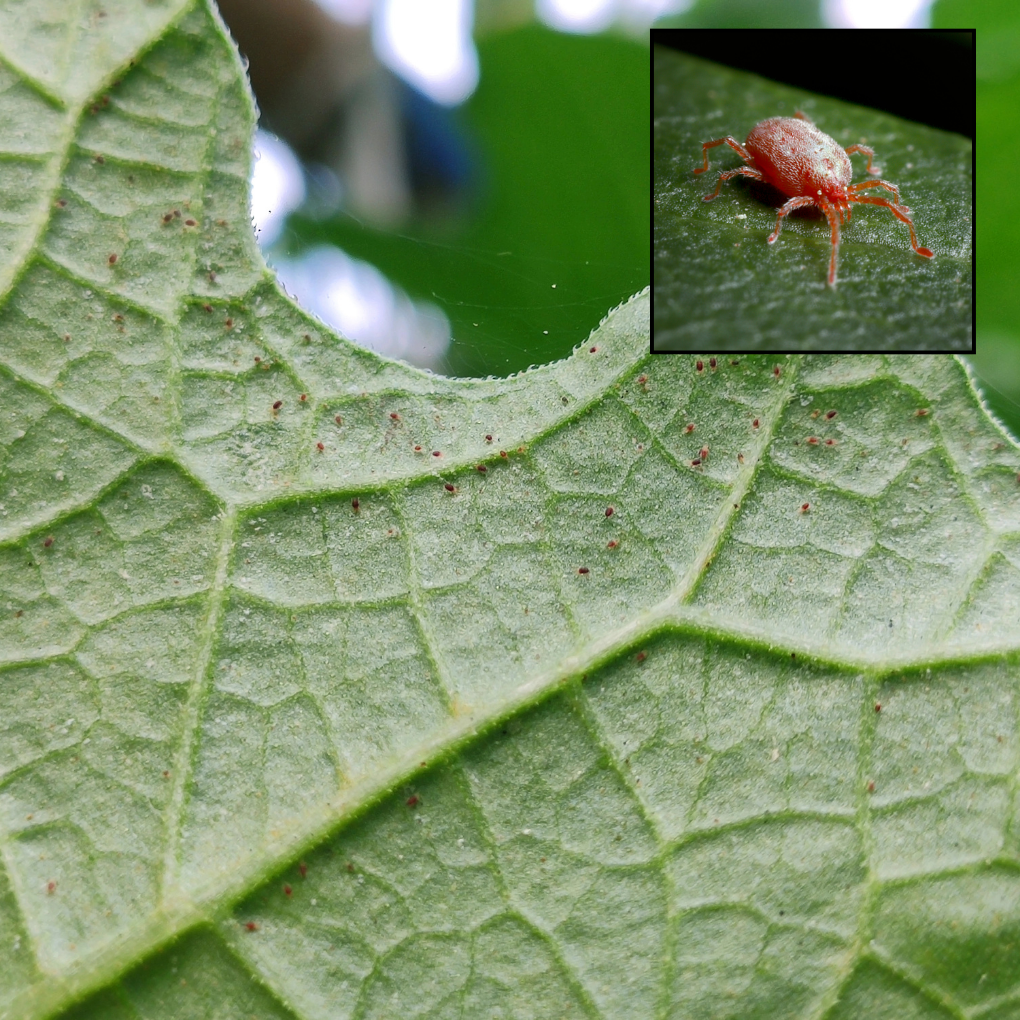
3. Spider Mites
Spider mites are not actually black, but because they are so tiny—less than 1 mm long—they often look like moving black specks or dirt on leaves. On closer inspection, they’re usually red, yellow, green, or even translucent.
Spider mites thrive in warm, dry conditions and reproduce rapidly, making them one of the most common pests of houseplants and greenhouses. They feed on the undersides of leaves by piercing plant cells and sucking out the contents. Over time, this weakens plants, making them more vulnerable to disease.
Signs of Infestation
- Leaves with tiny yellow or pale speckles, eventually turning brown or falling off.
- Fine, silky webbing on the undersides of leaves, between stems, or at leaf tips.
- Plants looking dusty, dull, or unhealthy even when watered properly.
- Heavy infestations cause entire sections of leaves to dry out and die.
🌿 Natural Treatment
Spray plants with neem oil or insecticidal soap to kill mites on contact. As a homemade insecticide, you can mix mild liquid soap with water and spray it directly on affected leaves.
Increasing humidity around plants, such as by misting or using a humidifier, also helps, as spider mites dislike moist environments. For outdoor gardens, introducing predatory mites can naturally reduce populations.
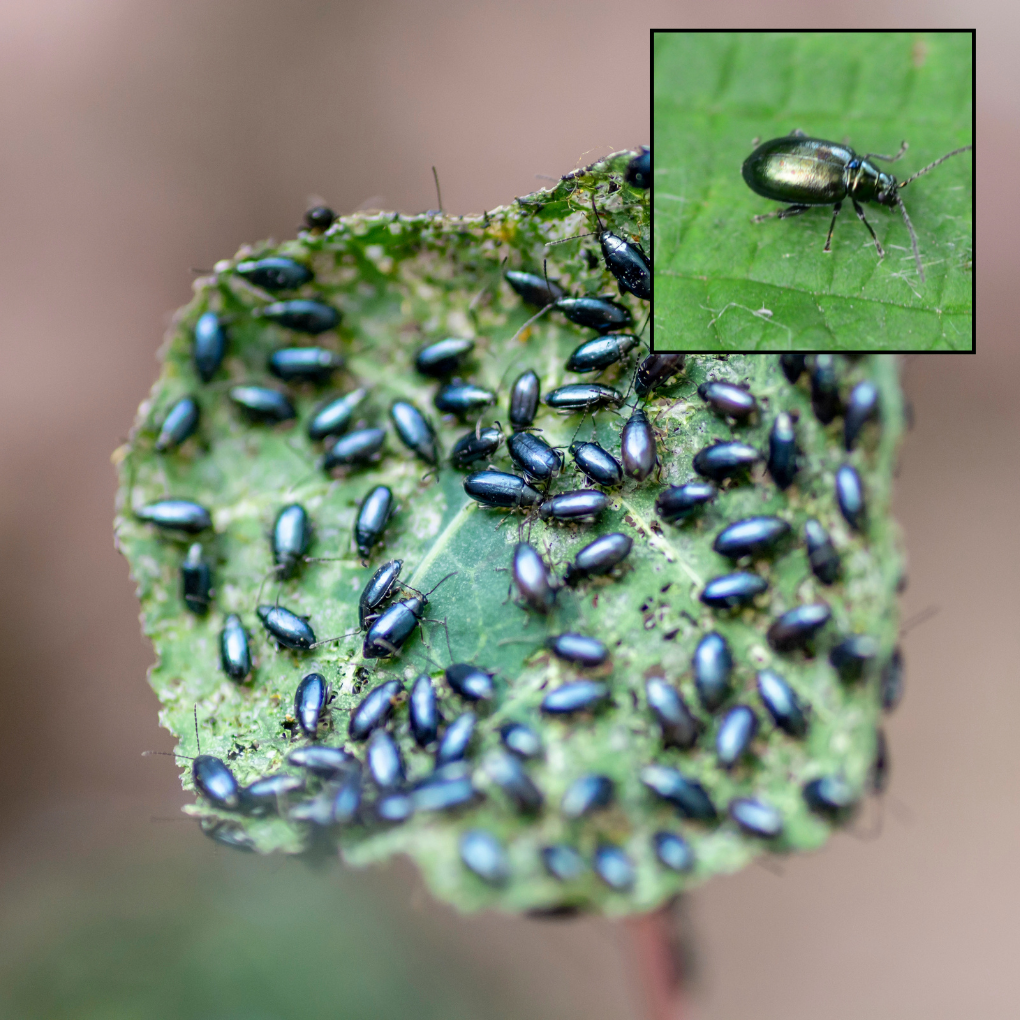
4. Flea Beetles
Flea beetles are small, shiny black or dark brown beetles that measure only about 1/16 inch long. True to their name, they jump quickly when disturbed, much like fleas. These pests are common in vegetable gardens and particularly target cruciferous crops, such as cabbage, broccoli, and radish.
They chew tiny round holes in leaves, creating a pattern known as “shot hole” damage. Young seedlings are their favorite snack, and heavy infestations can weaken or even kill tender plants if left untreated.
Signs of Infestation
- Small, round “shot holes” chewed through leaves.
- Seedlings showing slowed growth or wilting.
- Plants looking ragged or thinned out from repeated feeding.
- More severe damage in spring and early summer, when seedlings are young and vulnerable.
🧄 Natural Treatment
Dust the soil with diatomaceous earth to deter feeding. Spray plants with a homemade insecticide, such as garlic or chili spray, to repel beetles.
For added protection, cover seedlings with lightweight row covers to keep beetles off until plants are stronger. Rotating crops each season also helps reduce flea beetle populations in the soil.
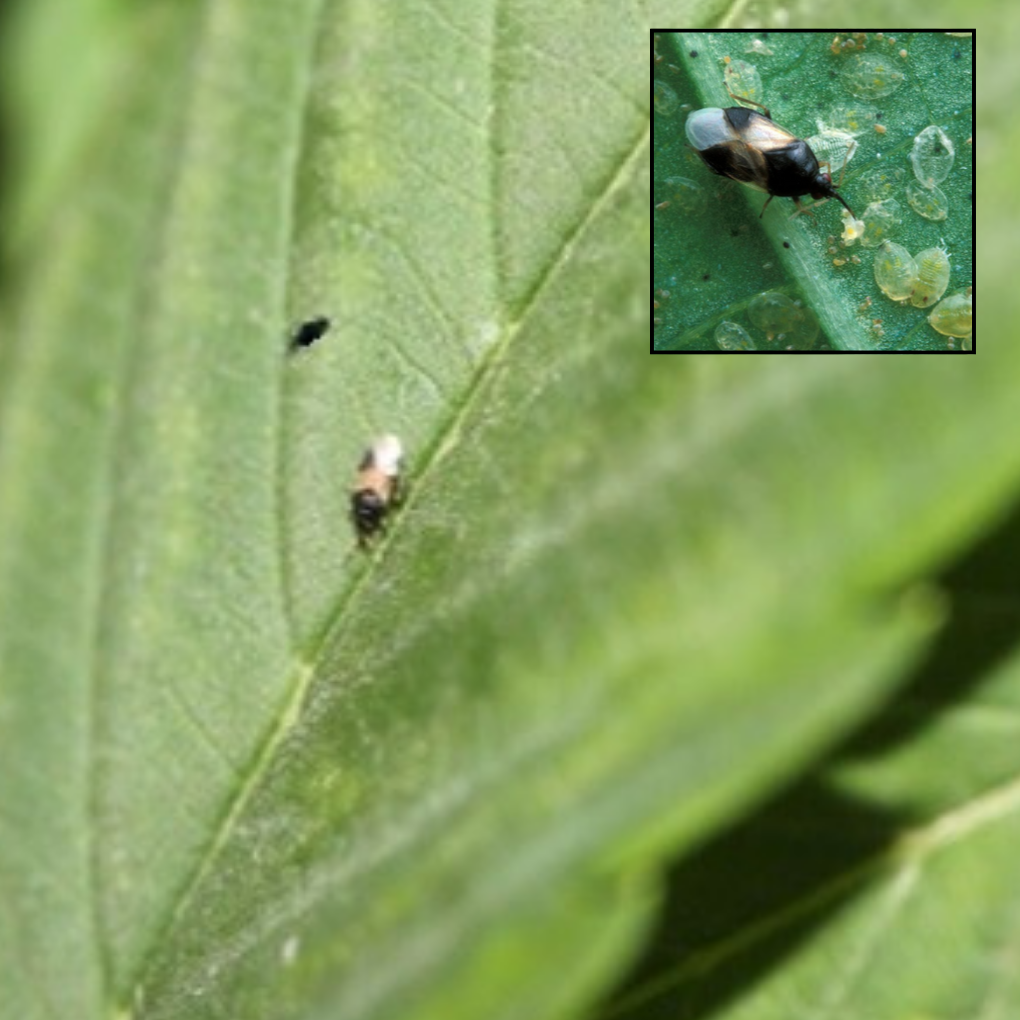
5. Minute Pirate Bugs
Minute pirate bugs are tiny insects, measuring only about 1/16 of an inch in length, that often appear as small black specks moving quickly across leaves. Despite their small size, they’ve earned the name “pirate” because of their sharp, sword-like mouthpart they use to pierce prey—almost like carrying a miniature sword.
Far from being pests, they’re beneficial predators that feed on thrips, aphids, spider mites, and insect eggs. Both nymphs and adults are active hunters, making them valuable allies in the garden.
Signs of Infestation
- Tiny black or black-and-white specks darting around leaves.
- No plant damage, even when many are present.
- Fewer pests such as aphids, thrips, or mites where pirate bugs are active.
- Occasionally, a harmless “pinch” if they land on your skin.
🌼 Natural Treatment
No treatment is needed, since these bugs are beneficial. Instead, please encourage them by planting nectar-rich flowers such as alyssum, daisies, or marigolds. Avoid broad-spectrum pesticides, which can harm pirate bugs along with the pests they hunt.
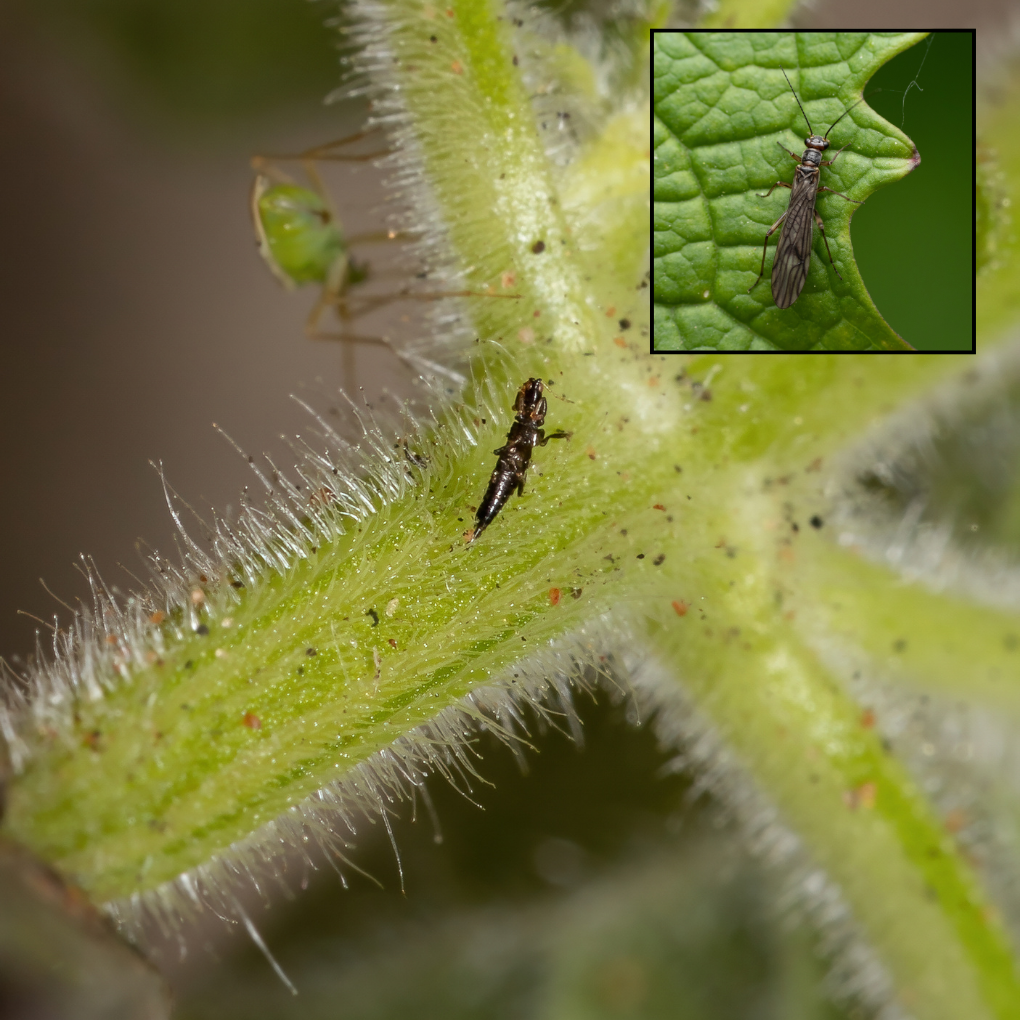
6. Thrips
Thrips are tiny, slender insects that measure less than 1/16 of an inch long. To the naked eye, they often look like thin black specks or tiny moving lines on leaves.
They feed by scraping the surface of leaves, flowers, or fruit and sucking out the juices. Because they’re so small and quick, they can be tricky to spot until plant damage shows up. Thrips are especially common in flowers and can also spread plant viruses.
Signs of Infestation
- Silvery streaks or pale patches on leaves and flowers.
- Leaves curling, distorted, or scarred.
- Tiny black specks of waste on plant surfaces.
- Thrips hopping or flying away when a plant is shaken.
🟨 Natural Treatment
Set out blue or yellow sticky traps to catch adult thrips. For a homemade insecticide, spray plants with a diluted solution of neem oil or insecticidal soap to kill both larvae and adults. Outdoors, encourage beneficial insects like lacewings or minute pirate bugs, which naturally keep thrips under control.
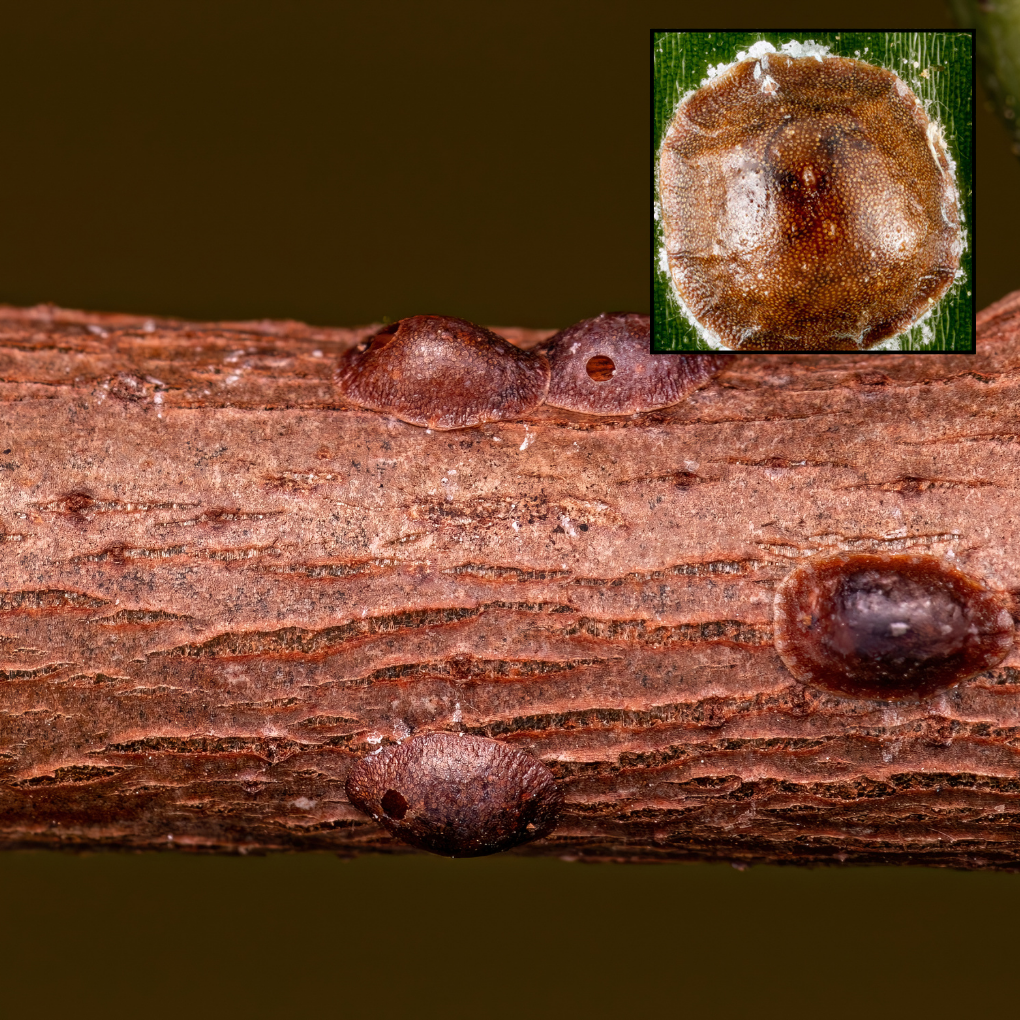
7. Scale Insects
Scale insects are tiny, oval pests that attach themselves firmly to stems, leaves, and sometimes fruit. They’re usually brown, tan, or gray, but many gardeners mistake them for small black bugs. That’s because the immature “crawler” stage can resemble black dust, and their sticky honeydew often results in black sooty mold on leaves.
Since adults don’t move much, they’re easy to confuse with harmless bumps on the plant, but they steadily suck out sap and weaken the plant over time.
Signs of Infestation
- Yellowing, curling, or dropping leaves.
- Sticky honeydew coating stems and leaves.
- Black sooty mold growing where honeydew collects.
- Small, shell-like bumps that don’t rub off easily.
- Slow or stunted growth in heavily infested plants.
🧴 Natural Treatment
For mild infestations, scrape scale off with a toothbrush or wipe with a cotton swab dipped in rubbing alcohol. For heavier cases, spray with neem oil or insecticidal soap. As a homemade insecticide, mix mild liquid soap with water and apply directly to affected areas. Repeat treatments may be needed, since scale insects can be persistent.
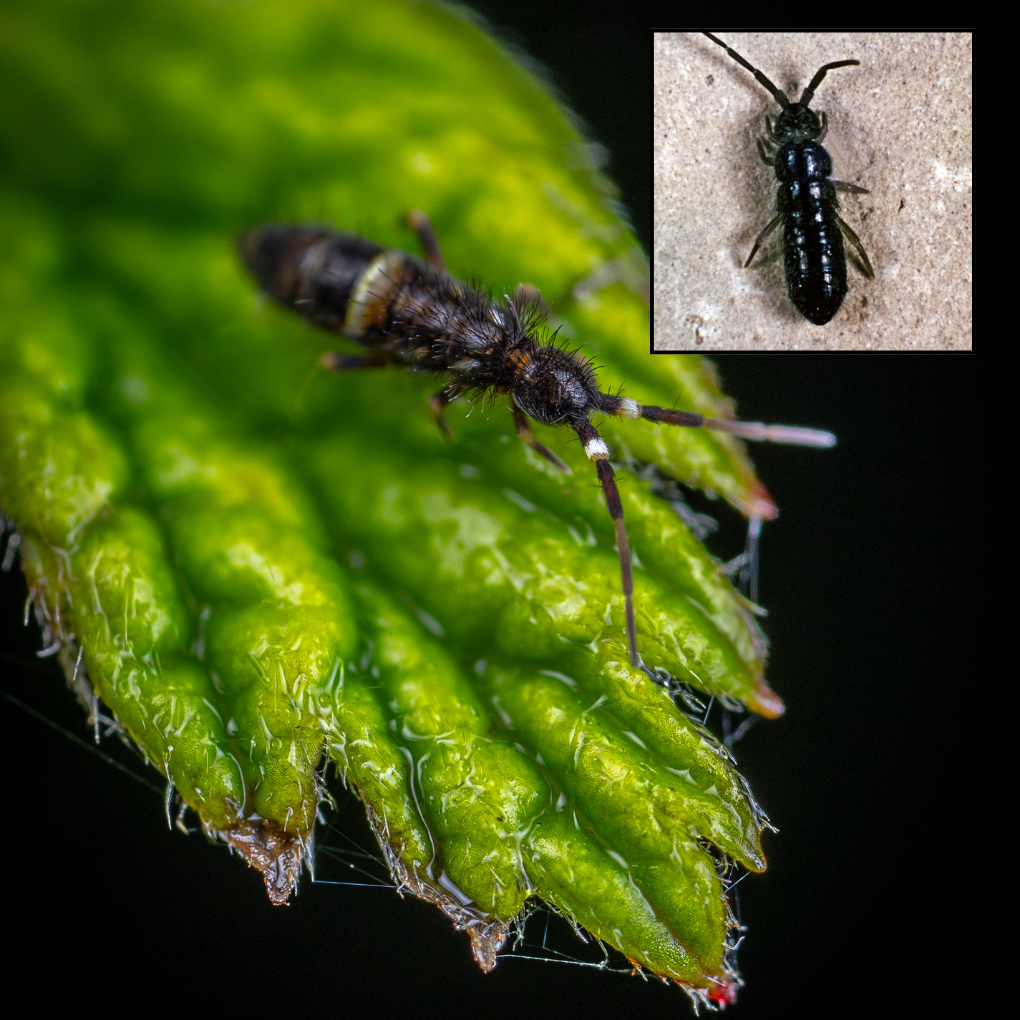
8. Springtails
Springtails are tiny, wingless insects that measure less than 1/16 of an inch. They can be white, gray, dark brown, or even black, and in clusters they often resemble fine specks scattered across the soil.
They get their name from the spring-like tail (called a furcula) that lets them jump several inches when disturbed. Springtails feed mainly on fungi, algae, and decaying organic matter in soil, so they’re more of a nuisance than a real plant pest.
Signs of Infestation
- Tiny black, gray, or white specks hopping in potting soil or around drainage holes.
- More noticeable after watering, since they’re attracted to moisture.
- Rarely cause direct plant damage, but heavy infestations may stress seedlings in very damp soil.
- Often found in overwatered houseplants or poorly draining pots.
🪨 Natural Treatment
Springtails typically don’t require control, as they help break down organic matter. To reduce their numbers, allow the soil to dry between waterings and improve drainage.
For stubborn cases, a homemade insecticide, such as diluted neem oil, can be applied to the soil. Diatomaceous earth sprinkled on the surface also helps reduce populations without harming plants.
How Small Black Bugs Behave Indoors vs. Outdoors
Where your plants live plays a big role in what kinds of bugs show up. Some pests love the warm, cozy air inside your home, while others do better outside in the garden. When you understand how bugs act in each environment, it’s easier to stop them before they become a bigger problem.
Indoor Pest Patterns
Indoor bugs are primarily concerned with comfort and survival. They prefer warm, humid areas where food, water, and shelter are readily available. Fungus gnats are drawn to damp houseplant soil, while spider mites do well in the dry air of heated homes.
Aphids usually stay outside unless you accidentally bring in an infested plant. Flea beetles tend to stick to the garden too, but they can sometimes sneak indoors by hitching a ride on your clothes.
Because the environment inside is stable, many pests reproduce much faster than they would outdoors. With no natural predators or adverse weather conditions to keep them in check, their numbers can increase rapidly. That is why a few gnats around your plants can suddenly become a swarm almost overnight.
Outdoor Pest Patterns
Outside, bugs deal with changing weather, predators, and seasons, which all affect how active they are. Aphids multiply quickly in warm weather but slow down or disappear in winter. Flea beetles show up in spring when seedlings are tender, then cause less damage later in the season.
Many outdoor pests follow plant growth cycles. Some hide in soil or leaf litter through winter and come out when it gets warm again. Others go after stressed or weakened plants first. Luckily, nature helps balance things out — ladybugs eat aphids, and predatory mites take care of spider mites. Still, when pest numbers get too high, your garden can quickly turn into a buffet for them.
Key Environmental Differences
- Moisture & Humidity: Indoor pests thrive in controlled humidity (or in overwatered pots), while outdoor pests are influenced by rainfall and seasonal dryness.
- Temperature Stability: Your home stays fairly consistent, making it easier for bugs to reproduce year-round. Outdoors, temperature changes force many pests into dormancy.
- Natural Predators: Indoors, pests rarely have natural predators to keep them in check. Outside, beneficial insects help control populations—unless pesticides disrupt the balance.
- Food Sources: Indoor pests often target houseplants, stored food, or organic debris, while outdoor pests prefer live plants, soil, and decomposing matter.
Understanding the Impact
Even small bugs can cause big problems if they’re ignored. They might seem harmless at first, but these tiny pests can quickly damage leaves, weaken roots, and spread to healthy plants. The sooner you spot the warning signs, the easier it is to save your plants and stop the infestation from spreading.
Early Signs of an Infestation
Look for these clues that pests are moving in:
- Discolored or speckled leaves: Often caused by aphids or spider mites feeding on sap.
- Sticky residue on leaves: A sign of aphid honeydew, which can lead to black sooty mold.
- Tiny holes or chewed edges: Usually from flea beetles feeding on young leaves.
- Fine webbing: A clear hint that spider mites are setting up camp.
- Small flying bugs near soil: Likely fungus gnats if they hover around your houseplants.
Long-Term Consequences
Leaving pests untreated gives them time to multiply and spread. Here’s what can happen:
- Plant death: Severe feeding or root damage can kill young or stressed plants.
- Spreading to other plants: One infested plant can quickly affect an entire collection or garden.
- Recurring infestations: If overwatering or poor soil care isn’t fixed, bugs will keep coming back.
- Ecosystem imbalance: Outdoors, too many pests can harm beneficial insects and upset the garden’s natural balance.
✨tip
Check Your Plants Once a Week
A quick look under leaves and around the soil can catch most problems before they become serious.
Natural Treatment Solutions
When dealing with tiny black bugs, reaching for chemical pesticides might seem like the easiest fix—but those can harm beneficial insects, contaminate soil, and even introduce toxins into your home.
Luckily, there are plenty of natural ways to kick pests to the curb without harming the environment (or your plants). Here are some tried-and-true solutions to stop infestations in their tracks.
🌿 Neem Oil
Neem oil is like the Swiss Army knife of natural pest control. This plant-based oil disrupts the growth and reproduction of pests like aphids, spider mites, and flea beetles, making it harder for them to multiply. Plus, it has antifungal properties that can help prevent plant diseases.
How to Use It:
- Mix a teaspoon of neem oil with a few drops of liquid soap in a quart of water.
- Spray directly onto affected plants, focusing on the undersides of leaves where pests love to hide.
- Apply every few days until the infestation is under control.
🧴 Insecticidal Soap
Unlike regular soap, insecticidal soap is formulated to target soft-bodied pests like aphids and spider mites without harming plants. It works by breaking down their outer coating, causing them to dehydrate (a little grim, but effective).
How to Use It:
- Use a store-bought insecticidal soap or make your own by mixing a few drops of mild liquid soap with water.
- Spray directly onto pests, making sure to coat them thoroughly.
- Repeat every few days, especially after rain or watering.
⚠️Warning: Avoid spraying during the hottest part of the day—soapy water can scorch plant leaves in direct sunlight.
🐞 Beneficial Insects
Sometimes, the best way to fight bugs is with more bugs. Ladybugs, lacewings, and predatory mites are all-natural pest control agents that feast on aphids, spider mites, and other common garden nuisances. Introducing these beneficial insects into your garden can help restore balance without any chemicals.
How to Attract Them:
- Plant nectar-rich flowers like dill, marigolds, and yarrow to provide food and shelter.
- Avoid using broad-spectrum pesticides that kill both good and bad bugs.
- If needed, you can purchase ladybugs or predatory mites online and release them directly onto infested plants.
🧄 DIY Sprays
Homemade sprays can be surprisingly effective at repelling and eliminating pests. Here are a few simple options:
- Garlic & Chili Spray: Blend a few cloves of garlic with a teaspoon of chili powder and water. Strain and spray onto plants to deter aphids and flea beetles.
- Vinegar & Soap Spray: Mix equal parts vinegar and water with a few drops of liquid soap to suffocate soft-bodied pests.
- Essential Oil Spray: Peppermint, rosemary, or tea tree oil diluted in water can help repel insects like fungus gnats.
🟨 Yellow Sticky Traps
Yellow sticky traps are a simple, non-toxic way to catch flying pests like fungus gnats, aphids, and whiteflies. These bright yellow sheets are coated with a sticky substance that lures insects in and traps them before they can reproduce and spread. Since many small pests are naturally drawn to the color yellow, these traps act like a magnet, making them an easy, low-maintenance solution for both indoor and outdoor infestations.
How to Use It:
- Place traps near houseplants to catch adult fungus gnats before they lay eggs in the soil.
- Hang or stake traps slightly above garden plants where aphids and whiteflies are active.
- Swap out traps when they’re covered with bugs to maintain effectiveness.
✨tip
Break the Cycle
If you’re dealing with fungus gnats, pairing sticky traps with better watering habits (letting the soil dry out a bit between waterings) can help break the cycle for good.
🪨 Diatomaceous Earth (Food Grade)
Diatomaceous earth (DE) is a natural, non-toxic powder made from the fossilized remains of tiny aquatic organisms called diatoms. It works by physically damaging the exoskeletons of pests like ants, fleas, and cockroaches, causing them to dehydrate and eventually die.
When used properly, it’s safe for pets and people, making it an excellent eco-friendly pest control option. Just make sure to use food-grade diatomaceous earth, as the kind sold for pool filtration is chemically treated and unsafe.
How to Use It:
- For Indoor Use: Lightly dust a thin layer of DE on areas where pests are active, such as along baseboards, around pet bedding, or under furniture.
- For Outdoor Use: Sprinkle it in your garden, around the perimeter of your house, or on plants to keep crawling pests away.
- Reapply After Rain or Watering: DE loses its effectiveness when wet, so be sure to reapply it after rain or heavy watering.
✨tip
Well-Ventilated Area
While DE is non-toxic, it can be irritating to the lungs if inhaled, so always apply it in a well-ventilated area and avoid breathing in the dust.
⚠️ Pet & Child Safety Warning
Even though these sprays use natural ingredients, they can still cause irritation or stomach upset if touched or swallowed by pets or young children. Always take a few extra precautions to keep everyone safe.
- During application: Keep pets and kids out of the area while you’re spraying. Open a window or work outside for better airflow.
- After spraying: Let plants dry completely before allowing pets or children near them again. If any spray gets on the floor or nearby surfaces, wipe it up right away.
- Storage tips: Store leftover mixtures safely out of reach and label your spray bottles clearly. Natural doesn’t mean risk-free — ingredients like garlic, chili, or essential oils can still irritate sensitive skin or paws.
- In case of accidental contact or ingestion: If a child or pet shows signs of irritation, vomiting, or discomfort after exposure, contact your local poison control center or veterinarian right away for guidance.
By taking these simple steps, you’ll keep your homemade insecticides effective and your loved ones safe.
Don’t Miss: Microplastics — Health Risks, Sources, and How to Reduce Exposure Discover how microplastics are making their way into our food, water, and homes — and why using natural pest control is one simple step toward reducing everyday exposure. Read more →Prevention and Ongoing Care
Once you’ve cleared out the bugs, a few simple habits can help keep them from coming back. Prevention is the easiest and most natural way to protect your plants long-term.
Inspect Plants Regularly
Check your plants once a week, especially under the leaves and around the soil. Catching early signs of pests saves a lot of time and effort later. Look for sticky residue, webbing, or any sudden color changes.
Water Wisely
Overwatering is one of the most common reasons bugs show up. Most pests, like fungus gnats, love damp soil. Let the top inch of soil dry before watering again, and make sure pots have good drainage. Consistent, balanced moisture helps your plants stay strong while keeping gnats and fungus at bay. A simple moisture meter can help if you’re unsure when to water.
Keep Leaves Clean
Dusty leaves can attract pests and block light. Wipe them gently with a damp cloth or soft brush every week or two. For a deeper clean, use a mix of water and a drop of mild soap or vinegar—test it on one leaf first. Clean leaves not only look better but also help plants breathe and resist infestations.
Quarantine New Plants
Before bringing new plants home or indoors, keep them separate for a week or two. This gives you time to check for hidden bugs or eggs before they spread to your other plants. A sunny windowsill or spare shelf works great for this quick inspection period.
Encourage Beneficial Insects
In your garden, invite natural helpers like ladybugs, lacewings, and minute pirate bugs. These beneficial insects feed on pests such as aphids, thrips, and spider mites. Outdoors, flowers like marigolds, dill, and yarrow attract them naturally. Indoors, predatory mites can safely help manage pest problems without chemicals.
Watch Your Soil
Old or compacted soil can harbor pest eggs and fungus. Refresh the top layer every few months and repot plants when the soil looks tired or smells musty. When you repot, mix in compost or coco coir to add nutrients and encourage healthy soil microbes that keep pests in check.
Technology and Professional Support
Even if you prefer natural pest control methods, a little technology or expert advice can make plant care easier and help you stop bug problems before they get out of hand.
Smart Apps and Monitoring Tools
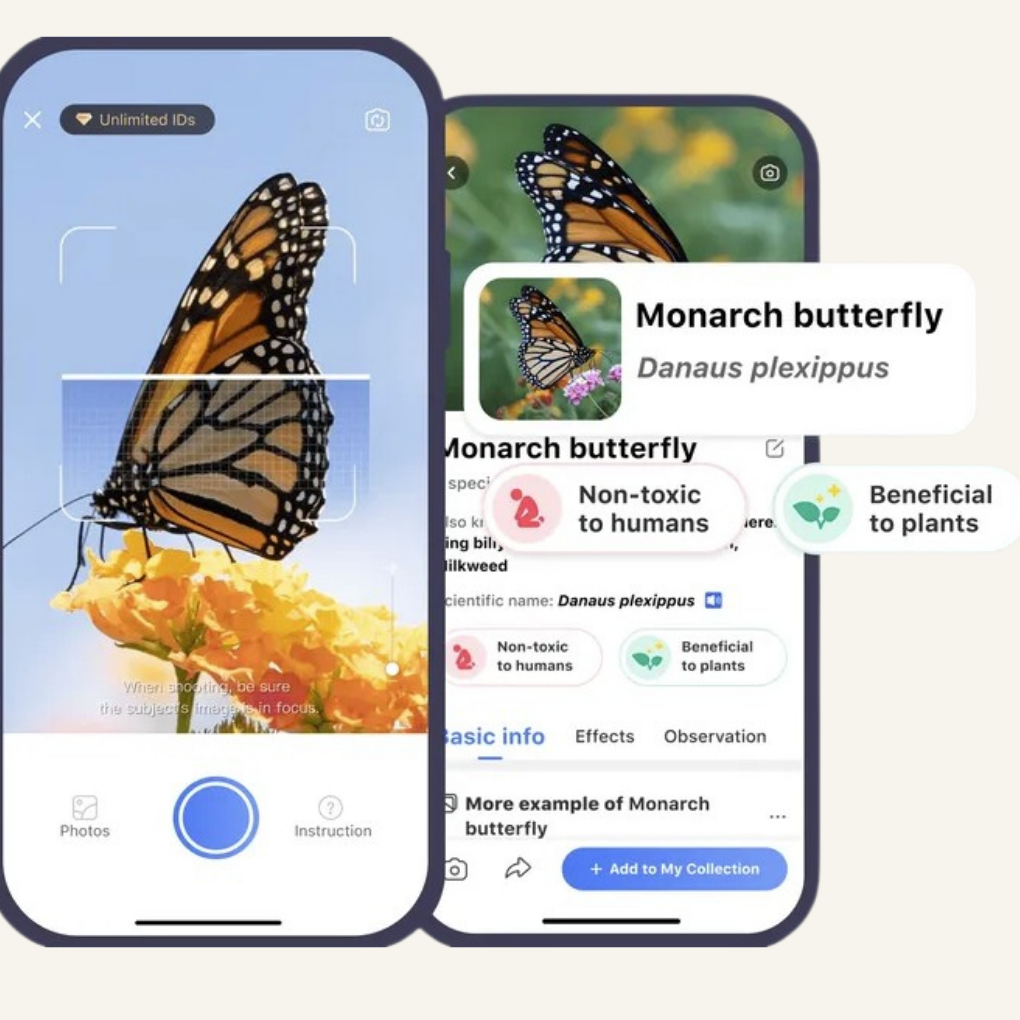
New tools are helping gardeners catch problems early. Some use satellites or simple phone apps to track plant health and soil conditions, while others can spot stress or pest activity before you even notice it.
Apps like Picture Insect make it easy to identify bugs by taking a quick photo — perfect for figuring out whether that tiny visitor on your plant is a pest or a harmless helper.
For larger gardens, tools like Farmonaut use satellite data and AI to detect signs of crop stress and possible infestations before they spread. Together, these tools make it easier to care for your plants naturally and stay one step ahead without relying on harsh chemicals.
When to Call in a Pro
If bugs keep coming back even after you’ve tried natural treatments, it might be time to get a little extra help. Many professional pest control companies now offer eco-friendly options that focus on prevention and targeted treatments instead of heavy pesticide use.
These experts can identify hidden infestations, suggest plant-safe solutions, and help you set up better long-term care routines.
How to Make It Work for You
- Pick apps or tools that match your space.
- Use alerts or reports to keep track of changes in plant health.
- Ask local pest control companies about sustainable or plant-safe treatment options.
- Combine smart tools with your regular care habits for the best results.
FAQs About Small Black Bugs on Plants
While it’s less common than with chemical pesticides, pests can sometimes adapt to repeated use of the same natural remedy. Rotating between different natural treatments and combining methods, like sticky traps and neem oil, helps prevent resistance over time.
Yes! A diluted mix of mild dish soap and water can help control soft-bodied pests such as aphids. Sprinkling cinnamon on top of soil may also deter fungus gnats thanks to its antifungal properties.
It’s best to check your plants weekly, both indoors and outdoors. Look closely at new growth, under leaves, and along the soil surface. Regular inspections help catch problems early before pests can spread.
Yes! Overwatering is a major cause of fungus gnat problems since their larvae thrive in moist soil. Letting the top inch of soil dry between waterings helps break their life cycle and discourages other moisture-loving pests.
Final Thoughts on Small Black Bugs on Plants
Dealing with those pesky small black bugs doesn’t have to mean resorting to harsh chemicals or toxic sprays. With natural solutions like neem oil, insecticidal soap, yellow sticky traps, and diatomaceous earth, you can protect your plants and home while staying eco-friendly.
These methods are not only effective but also safe for you, your pets, and the environment. By being mindful of pet safety and consistently applying these treatments, you’ll keep your space pest-free without the guilt.
So, whether you’re tackling aphids in your garden or fungus gnats in your houseplants, rest assured that nature has your back—no toxic chemicals required. Happy pest-fighting!
📚References
- Spiderzoon. (n.d.). All Insects. Spiderzoon. Retrieved September 2, 2025, from https://spiderzoon.com/insects/
- University of California Statewide Integrated Pest Management Program. (n.d.). Home / UC Statewide IPM Program (UC IPM). University of California Agriculture and Natural Resources. Retrieved September 2, 2025, from https://ipm.ucanr.edu/
